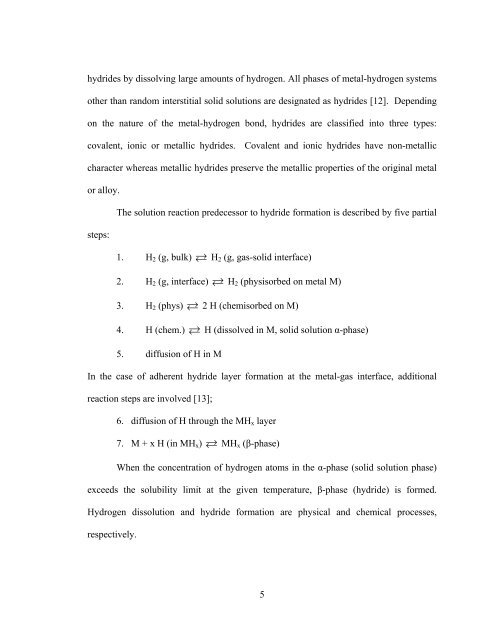You also want an ePaper? Increase the reach of your titles
YUMPU automatically turns print PDFs into web optimized ePapers that Google loves.
hydrides by dissolving large amounts of hydrogen. All phases of metal-hydrogen systems<br />
other than random interstitial solid solutions are designated as hydrides [12]. Depending<br />
on the nature of the metal-hydrogen bond, hydrides are classified into three types:<br />
covalent, ionic or metallic hydrides. Covalent and ionic hydrides have non-metallic<br />
character whereas metallic hydrides preserve the metallic properties of the original metal<br />
or alloy.<br />
The solution reaction predecessor to hydride formation is described by five partial<br />
steps:<br />
1. H 2 (g, bulk) H 2 (g, gas-solid interface)<br />
2. H 2 (g, interface) H 2 (physisorbed on metal M)<br />
3. H 2 (phys) 2 H (chemisorbed on M)<br />
4. H (chem.) H (dissolved in M, solid solution α-phase)<br />
5. diffusion of H in M<br />
In the case of adherent hydride layer formation at the metal-gas interface, additional<br />
reaction steps are involved [13];<br />
6. diffusion of H through the MH x layer<br />
7. M + x H (in MH x ) MH x (β-phase)<br />
When the concentration of hydrogen atoms in the α-phase (solid solution phase)<br />
exceeds the solubility limit at the given temperature, β-phase (hydride) is formed.<br />
Hydrogen dissolution and hydride formation are physical and chemical processes,<br />
respectively.<br />
5



